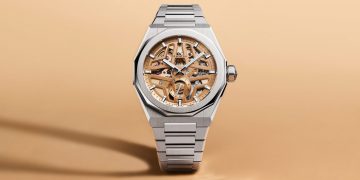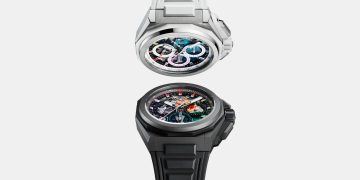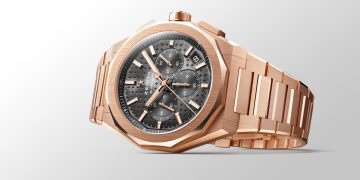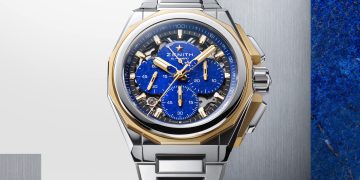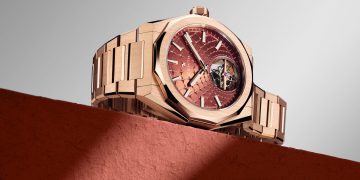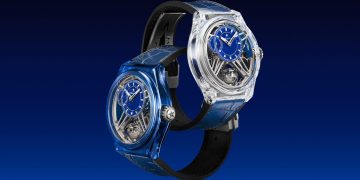Source: Images and content by Jaeger LeCoultre @ Jaeger LeCoultre.
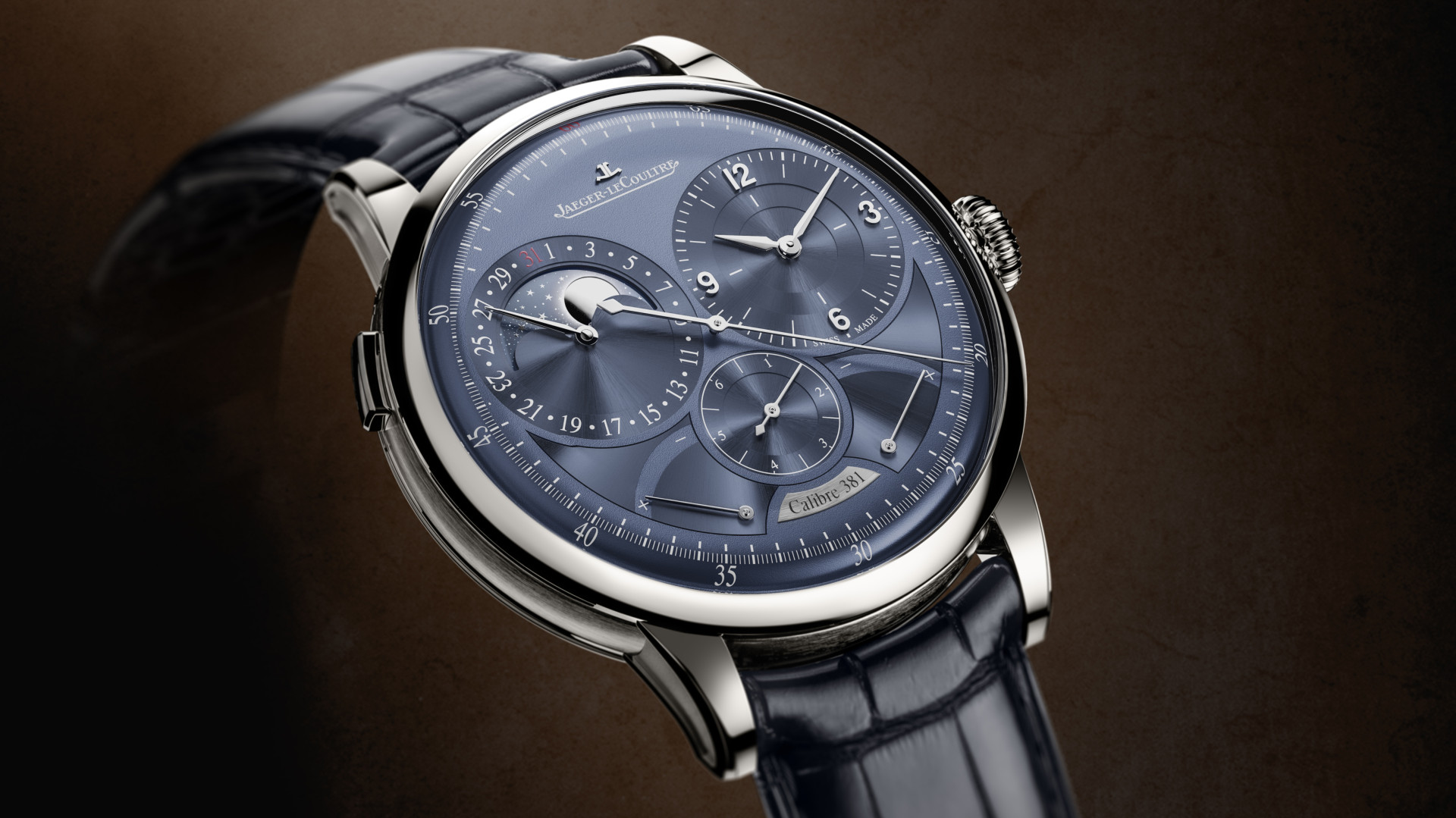
A Precise Approach to Aesthetics
For Jaeger-LeCoultre, the pursuit of precision is not limited to the accuracy of timekeeping but is equally important for the beauty of the design and finishes. On the deep blue dial of the Duometre Quantieme Lunaire, the long and very fine hands are a signature of all Duometre watches, as is the symmetrical layout, with three sub-dials forming an inverted pyramid. The sub-dial at 3 o’clock shows the time, with the cardinal hours marked by applied Arabic numerals; the sub-dial at 9 o’clock displays the date with a hand and the moon phase set against a blue sky. The seconde foudroyante sub-dial nestles beneath them at 6 o’clock.
The dial is made in several sections, with different finishes to create visual interest and contrast. The opaline main dial has the very soft glow and sense of visual depth characteristic of that decorative technique. The lower section of the dial is sunray-brushed and, in an added touch of refinement, the two power reserve indicators are distinguished from this sunrayed background by an opaline arc.
Inspired by the aesthetic of the sector dials that were featured on historic timepieces, the broad ring encircling each is sunray-brushed. The convex curve of the dial perimeter closely follows the contour of the glass -box crystal that protects it, and the sub-dials are slightly sunken into its surface, increasing the sense of visual depth.
Further evidence of the Maison’s approach to precision can be seen in the finishing of the movement, fully visible beneath the transparent crystal case-back. Much of the calibre is open-worked, which serves both an aesthetic and a technical purpose: the latter enables the watchmakers to set and assemble some of the 374 components more easily, while the former allows a view deep into the mechanism.
Creating visual unity across the entire expanse of the movement, the bridges are decorated with sunrayed Geneva stripes. It’s a challenging technique that demands absolute precision because the components must be decorated one-by-one, yet the stripes must radiate from the centre of the regulating organ to the edge of the calibre in perfect alignment once the movement is assembled.

